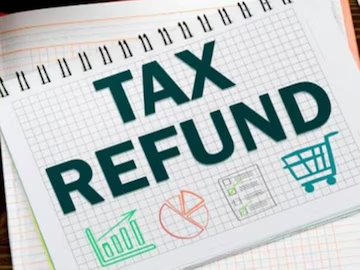Tax Refund Delays Due to Pending Appeals Backlog
Why in the news?
Delays in income tax refunds are linked to a backlog of 580,000 pending tax appeals. The government’s adjustment of refunds against old tax demands is causing financial strain for taxpayers, despite ongoing reforms in the appeals process.
Reasons Behind Tax Refund Delays:
- Pending Tax Appeals: The delay in tax refunds is often due to income tax refunds being adjusted against old outstanding demands. Currently, 580,000 tax appeals are pending before the Commissioner (Appeals), leading to this adjustment.
- Faceless Appeals System: Despite the introduction of the faceless appeals system in 2020, most of these appeals remain unresolved. Appellants face delays and are not granted timely hearings, resulting in prolonged financial hardship.
Challenges in the Tax System:
- Unresolved Appeals: Many taxpayers’ appeals have been pending for over five years without any action from the authorities. Even after mandatory hearings through video conferencing (VC), no orders are issued, leaving taxpayers in limbo.
- Refund Adjustments: The Department adjusts subsequent year refunds against unresolved appeals, often without the taxpayers’ agreement. This practice, though intended to collect outstanding dues, leads to unnecessary financial strain for taxpayers.
- Rising Interest Rates: Taxpayers continue to accrue interest on unadjusted demands at a rate of 18% per annum, further burdening them financially.
Potential Solutions for Efficient Resolution:
- Mandatory Timelines: A more efficient system could be implemented by converting discretionary adjudication of appeals into mandatory timelines, ensuring timely resolution of tax disputes.
- Improved System for Appeals: The points-based incentive system for resolving appeals needs restructuring to prioritize higher-value cases and ensure fairness. Additionally, addressing infrastructure gaps and filling vacancies in the tax department would help clear the backlog.
Concept of Goods and Services Tax (GST):
- Introduction: GST is a value-added tax levied on the supply of goods and services, launched in India on 1st July 2017 via the 101st Constitution Amendment Act.
- Key Features: Subsumes indirect taxes like excise duty, VAT, and service tax; levied at the point of consumption; promotes the “One Nation, One Tax” concept.
- Tax Structure:
- Central GST (CGST): Covers excise duty and service tax.
- State GST (SGST): Covers VAT and luxury tax.
- Integrated GST (IGST): Manages inter-state trade.
- Tax Slabs: 0%, 5%, 12%, 18%, and 28%.
Sources Referred:
PIB, The Hindu, Indian Express, Hindustan Times






